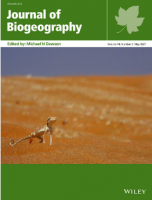“Aim: Biological invasions are likely determined by species dispersal strategies as well as environmental characteristics of a recipient region, especially climate and human impact. However, the contribution of climatic factors, human impact, and dispersal strategies in driving invasion processes is still controversial and not well embedded in the existing theoretical considerations. Here, we study how climate, species dispersal strategies, and human impact determine plant invasion processes on islands distributed in all major oceans in the context of directional ecological filtering.
Location: Six mountainous, tropical, and subtropical islands in three major oceans: Island of Hawai’i and Maui (Pacific), Tenerife and La Palma (Atlantic), and La Réunion and Socotra (Indian Ocean). Taxon: Vascular Plants. Methods: We recorded 360 non-native species in 218 plots along roadside elevational transects covering the major temperature, precipitation and human impact (i.e., road density) gradients of the islands. We collected dispersal strategies for a majority of the recorded species and calculated the environmental niche per species using a hypervolume approach.
Results: Non-native species’ generalism (i.e., mean community niche width) increased with precipitation, elevation and human impact but showed no relationship with temperature. Increasing precipitation led to environmental filtering of non-native species resulting in more generalist species under high precipitation conditions. We found no directional filtering for temperature but an optimum range of most species between 10 and 20°C. Niche widths of non-native species increased with the prevalence of certain dispersal strategies, particularly anemochory and anthropochory.
Main conclusions: Plant invasion on tropical and subtropical islands seems to be mainly driven by precipitation and human impact, while temperature seems to be of little importance. Furthermore, anemochory and anthropochory are dispersal strategies associated with large niche widths of non-native species. Our study allows a more detailed look at the mechanisms behind directional ecological filtering of non-native plant species in non-temperature-limited ecosystems.”

